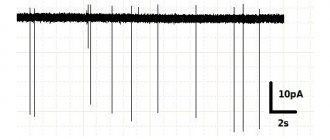From the history of the disease
Since the classic symptoms of chorea are erratic arm movements and an unsteady gait accompanied by dancing movements, it is not surprising that the Greek word chorea, which means “dance,” eventually became the name for this disease.
One of the first doctors to describe this serious illness was Paracelsus (1493-1541). Describing the phenomena of religious ecstasy in the form of the dance of St. Vitus, popular in the Middle Ages and the Renaissance, he discovered people demonstrating severe pathological symptoms. Much later, already in the 17th century, the doctor T. Sydenham described chorea, which appears in childhood and was named in his honor. And only in 1872, D. Huntington (Huntington) described a hereditary form of chorea that debuts in adults. Now this disease is called chorea or Huntington's disease (abbreviated as HD).
In 1993, an international team of genetic researchers discovered a mutation that causes HD.
Causes of chorea
We are talking about serious genetic changes: this is the HNT gene, which is responsible for the development of pathology. Its location is the fourth chromosome. It has the ability to encode a special protein called huntingtin. How it works normally is unknown to science, but if it changes due to genetic abnormalities, HD occurs.
As the protein changes its structure, it causes nerve cells in the human brain to begin to function incorrectly and eventually die. Huntingtin is a complex substance, so the course of the disease is complex and multivariate. Modern researchers continue to actively study Huntington's chorea, trying to better understand the specifics of the basic mechanisms of its development.
The mutation that causes chorea is contained in all cells of the patient’s body, so we are talking about a classic hereditary disease.
Symptoms of chorea
The time of appearance of the first symptoms of chorea is middle age (period from 35 to 55 years). About 10% of clinical cases of HD occur in childhood and adolescence. In such situations, experts talk about juvenile chorea.
The development of the disease often occurs latently and is unnoticeable at first, so it can be diagnosed late.
The symptoms of chorea are varied. For example, it can manifest itself with a combination of symptoms (the patient’s mood constantly changes and difficulties in thinking arise). The development of symptoms depends on age and severity of the pathology. Some patients demonstrate predominantly motor disorders with mild mental disorders, while others, on the contrary, show anxiety, signs of depression or other mental disorders. The exact time when the first symptoms appear is difficult to determine.
Diagnostics
A neurological examination of the patient and analysis of the clinical picture allows a preliminary diagnosis to be made. Much attention is paid to family history (presence of similar symptoms or confirmed chorea in close relatives), medication use, previous infectious diseases, etc.
For a final conclusion, a comprehensive medical examination is required. General and biochemical blood tests can detect inflammation, determine the level of copper and ceruloplasmin in the blood, and also detect liver particles indicating Wilson-Konovalov disease.
Additionally, CT or MRI and electroencephalography are prescribed.
Differential diagnosis is also carried out with acute rheumatic fever, athetosis, dystonia, myoclonus, athetosis.
Movement disorders
Movement disorders associated with chorea are usually called:
- actually, trochee;
- bradykinesia;
- dystonia.
These symptoms prevent the patient from being in a natural physiological position, disrupting the processes of walking and balance. “Dance” is expressed in involuntary movements that a person cannot control. Bradykinesia manifests itself in the slowness and complexity of voluntary movements, and dystonia manifests itself in the formation of unnatural and awkward poses, accompanied by “twisting” or twitching of the limbs. Also, movement disorders that occur with Huntington's chorea include dysfunction of the eye muscles, problems with swallowing and unclear speech.
Motor disturbances in the manifestations of chorea in adults are characterized by speed, pretentiousness and spontaneity. In this case, any muscle groups can be involved, and control of movements is absolutely impossible.
Usually, the onset of a pathological process is indicated by deviations observed during movements of the facial muscles. Patients grimace, stick out their tongues, raise their cheeks, curl their lips into a “tube,” frown and wink ridiculously. The progression of the pathology is accompanied by the appearance of involuntary movements in other muscles. Patients begin to quickly bend and straighten their fingers, then similar symptoms affect the lower extremities. Sometimes movements occur in the legs and arms at the same time.
Children suffering from chorea, on the contrary, demonstrate sluggish movements. They are very slow, and the child’s speech is slurred, with incorrect pronunciation of sounds and words, impaired speed and rhythm. From the motor sphere, oscillatory movements of the eyeballs are typical. The child cannot normally move his gaze from one object to another and focus his vision on a specific object.
When the disease begins in childhood and adolescence, experts note bradykinesia and muscle stiffness as the main symptoms. Children do not demonstrate violent movements, as with classical chorea in adults. Also, juvenile chorea is characterized by disturbances in behavior and learning with rapid progression of the entire symptom complex.
When the disease begins in a later age, chorea itself is its leading symptom, and its heredity is very easy to identify. Most often, the parents of an adult patient are no longer alive, since they simply do not live to see the moment when their offspring begin to experience severe symptoms of chorea.
Free consultation on training issues
Our consultants are always ready to tell you about all the details!
Mental changes
The psyche in HD undergoes gradual pathological changes. A decrease in a person’s ability to fully think is characterized, first of all, by problems with memory and a decrease in the critical threshold for perceiving one’s own state. The patient becomes anxious, irritable or, conversely, apathetic. In severe cases, hallucinatory or delusional syndromes develop. Suicidal behavior is also common in the context of severe depression.
Also, the following mental symptoms may appear:
- aggressive outbursts;
- insomnia;
- impulsiveness and spontaneity in behavior;
- social alienation.
Delusions and hallucinations are much less common. As for mental disorders, as the disease progresses, patients gradually lose memory acuity, logic and concentration. They find it difficult to make independent decisions and give clear answers to even the simplest questions. Over time, they learn new information worse and worse, which is an obvious sign of progressive dementia.
Stages of flow
Dr. A. Scholsen from Georgetown University (USA) proposes five stages of chorea development as a classification:
- early The patient has been diagnosed with Huntington's chorea, but so far his full functions have not been impaired;
- intermediate early. A person is able to work and have normal contact with society, but difficulties in thinking, movement and behavior are already making themselves felt. Patients can still cope with everyday activities and work;
- intermediate late. The patient is no longer able to work, but he still does household chores himself;
- late initial. The patient loses independence, but at home retains a number of functions - subject to the regular participation of other people in his daily life;
- late. Help is needed all the time, including professional care. Note that the late stage of the disease requires a special approach and skills from the people around the patient.
Folk remedies
Photo: beardoholic.com
Chorea is a serious disease that requires medical attention. Under no circumstances should one assume that folk remedies can save a person from this illness. As was written earlier, sedatives are used in the treatment of chorea. Many of them are based on plant components. Therefore, they can be safely replaced with traditional medicine.
There are many folk recipes that have a sedative effect:
- Infusion of oregano, calendula and tansy. To prepare a soothing mixture, you will need to mix the listed herbs in equal quantities, pour boiling water over it, wrap it up and let it brew for at least half an hour. After preparation, the infusion is used three times a day, 100 ml. For one glass of boiling water you will need 1 tablespoon of the mixture.
- An infusion of lemon balm leaves is also easy to prepare. To do this, you will need 3 tablespoons of crushed lemon balm leaves, which are poured with a glass of boiling water and simmered in a water bath for 10 - 15 minutes. After which the infusion should be cooled and strained. You need to consume 100 ml twice a day.
It’s even easier to make lemon balm tea, which is no less beneficial than the infusion.
Mint is very popular, and many people grow it in their summer cottage. To prevent such a wonderful herb from going to waste, you can brew tea using it. This tea will not only improve your mood and relieve irritability, but also help you fall asleep quickly.
There is another sedative based on honey and beet juice. To prepare it, you need to mix beet juice and honey in half. The resulting mixture should be taken 0.5 cups 3 times a day for 10 days, after which a break is taken.
Herbal baths before bed are also effective. For example, to prepare one of them you will need 1 kg of herbs (wormwood, linden, rosemary). After mixing, the herb is poured with 4 liters of cold water, then boiled over fire for 5 minutes and infused for the next 15 minutes. After preparation, the resulting broth is filtered and poured into a warm bath.
The information is for reference only and is not a guide to action. Do not self-medicate. At the first symptoms of the disease, consult a doctor.
Forms of the disease
Based on the specifics of symptoms, the following forms of chorea are distinguished:
- hyperkinetic. It is characterized by spontaneous motor acts, which, as noted earlier, are not subject to conscious control. Also, speech disturbances due to hypertonicity of the facial muscles are typical for the hyperkinetic form of chorea. Sometimes patients have convulsions and uncontrolled oculomotor acts during sleep;
- akinetic-rigid. Severe muscle hypertonicity;
- mental. Dementia gradually develops, and the patient's personality undergoes destructive changes.
Psychotic phenomena for the latter form are also a characteristic feature.
Complications
Most forms of chorea are characterized by frequent relapses, the frequency of which can be reduced by following your doctor's recommendations.
When it comes to hereditary pathology, the prognosis is generally unfavorable. The disease gradually progresses. Severe complications develop - pneumonia, heart failure. Uncontrolled movements often cause injuries. Choreic hyperkinesis can cause spasm of the respiratory muscles, which can lead to suffocation. Patients often complain of hallucinations and other psychological disorders.
Non-drug treatment
In some cases, patients respond well to non-drug therapy in the form of:
- psychotherapeutic influence;
- exercise therapy;
- classes with a qualified speech therapist;
- breathing exercises;
- occupational therapy.
Regular use of these methods (of course, if the patient’s condition allows) can significantly reduce the intensity of pathological symptoms both physically and mentally. It has been proven that patients’ psycho-emotional background improves, they begin to better control their voluntary movements. Walking becomes more stable, as do swallowing and balance.
Physical exercise is one of the effective ways to slow down the development of movement disorders. There are special exercise therapy programs developed for such patients, which have repeatedly shown their effectiveness.
Models for studying Huntington's disease
Animal models of HD appeared more than 30 years ago. The first were models based on the introduction of neurotoxic substances into the striatum (for example, quinolinic acid, an NMDA receptor agonist), which caused neuronal death. Currently, most researchers are working on transgenic animal models, which include not only mice and rats, but also invertebrate animals - the fly Drosophila melanogaster and the worm Caenorhabditis elegans.
Mouse models of Huntington's disease differ from each other in the number of CAG repeats and the level of expression of the transgene - the artificially introduced huntingtin gene. Because The development of HD depends on these factors; different strains of mice differ from each other in the rate of development of pathologies. The most widely used models include the R6/2, R6/1, and YAC128 mouse strains, which were also used in our work. In mice of these lines, the symptoms of the disease are most pronounced and appear quite quickly. In addition, these animals develop cognitive and motor impairments with age and develop partial loss of neurons in the striatum and cortex.
Another way to model HD is to use cell culture. In the simplest case, cell cultures with stable transfection of the huntingtin gene are used. For example, these are PC12 cells containing an inducible transgene of the first exon of huntingtin or striatal neurons expressing huntingtin fragments of different lengths. In addition, primary cultures from neurons from transgenic mice or immortalized neurons can be used.
Drug treatment
Doctors use strong medication treatment in severe cases of chorea. One popular drug is tetrabenazine. It was developed specifically for the treatment of Huntington's chorea as a drug that reduces hyperkinesis.
Antipsychotics and drugs used for Parkinson's disease are also prescribed. The administration of antiparkinsonian drugs improves motor functions, and antipsychotics (for example, haloperidol, chlorpromazine, clozapine, etc.) alleviate the condition of patients with delusional and hallucinatory phenomena. If the patient is depressed, he is prescribed antidepressants; for insomnia, sedatives and sedatives are prescribed.
Competition "bio/mol/text"-2013
This work took first place in the “Own work” category of the “bio/mol/text” competition 2013.
The competition is sponsored by the visionary Thermo Fisher Scientific. The sponsor of the People's Choice Award is Helicon.
As life expectancy increases, more and more people are suffering from Alzheimer's disease and Parkinson's disease. Unfortunately, years of research have not yet led scientists to discover the causes of the development of these diseases and possible therapy. This is mainly due to the fact that almost nothing is known about the factors that cause the disease, and also because very few patients have a genetic predisposition. Most often, these diseases are sporadic, i.e. the reasons for their occurrence have not been established. This leads to endless debate - no one knows how to artificially induce this disease in model animals for experiments and drug discovery. Therefore, more and more scientists are turning their attention to genetic diseases of the nervous system, such as Huntington's disease (HD). This disease, like Alzheimer's disease and Parkinson's disease, belongs to the group of neurodegenerative diseases, with which it shares a number of similar features: death of neurons in the central nervous system, accumulation of amyloid-like protein aggregates, cognitive and motor impairments in patients. At the same time, HD has an important advantage from the point of view of researchers, because it is known which mutation causes this disease. This makes it possible to create precise genetic models and study them in animals. This is important because if we understand the pathogenesis of Huntington's disease, it will be easier for us to understand sporadic neurodegenerative diseases. This is what we tried to do in our study.








